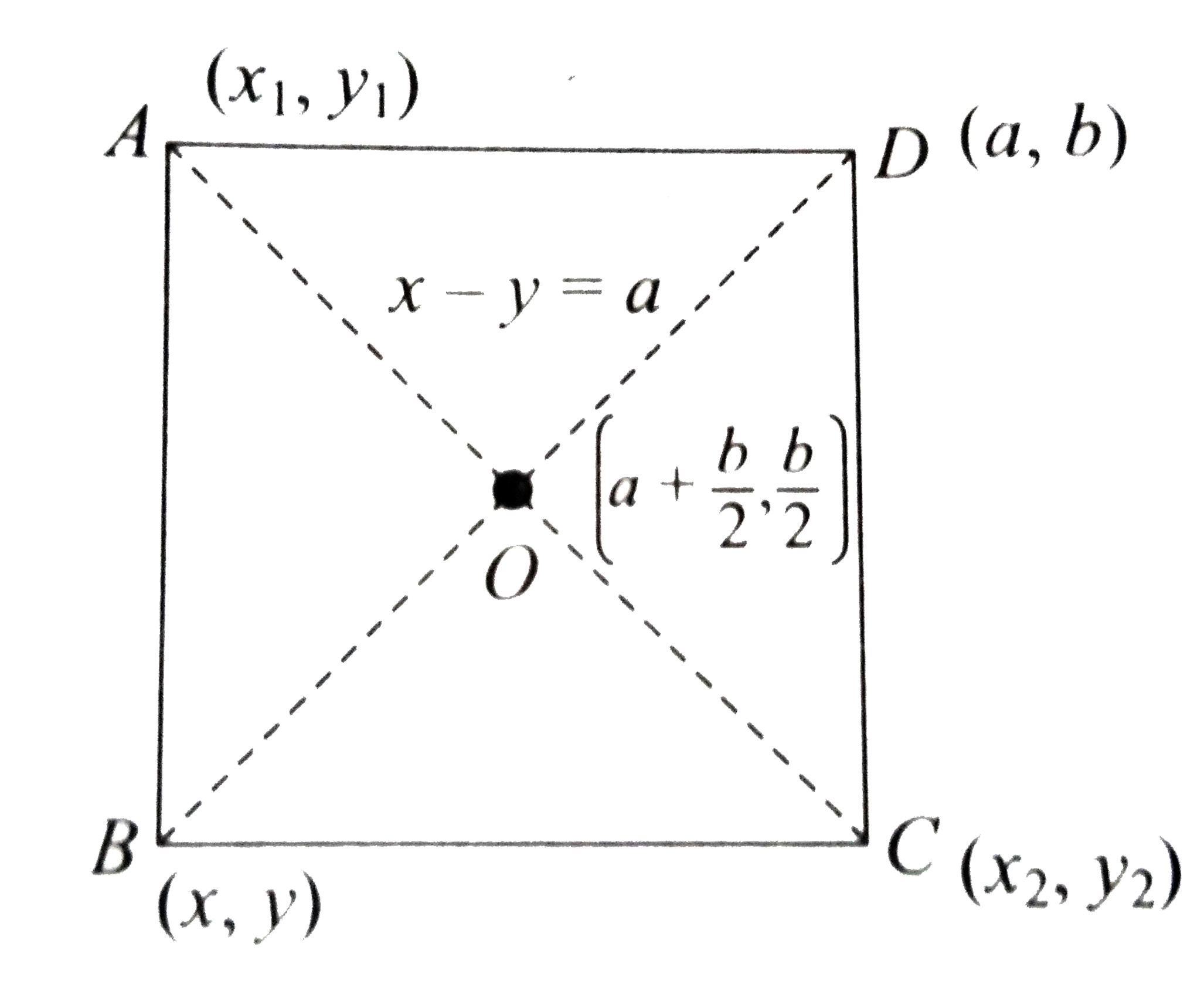If (a, b) be an end of a diagonal of a square and the other diagonal has the equation x−y=a, then another vertex of the square can be
(a−b,a)
(a,0)
(0,−a)
(a+b,b)

Diagonal AC is x−y=a
∴ Slope BD=−1
Also BD passes through (a,b)
∴ Equation of BD is x+y=a+b
Solving, we get point O≡(a+b2,b2)
∴ point B≡(a+b,0)
mAC=1=tanθ
OA=OD=b√2
Using parametric form of straight line points A and C are given by
(a+b2±b√2cos45∘,b2±b√2sin45∘)
or A(a,0) and C(a+b,b)
Similar Questions
Knowledge Check
A square has one vertex at the vertex of the parabola y2=4ax and the diagonal through the vertex lies along the axis of the parabola. If the ends of the other diagonal lie on the parabola, the coordinates of the vertices of the square are (4a,4a) (b) (4a,−4a) (0,0) (d) (8a,0)
A(4a,4a)B(4a−4a)C(0,0)D(8a,0)The diagonal of a square is 4√2 cm. The diagonal of another square whose area is double that of the first square is :
A8√2 cmB√32 cmC8 cmD16 cmThe diagonal of a square is 4√2cm. The diagonal of another square whose area is double that of the first square is
A8 cmB8/2cmC42 cmD6 cm
The diagonals of a square are perpendicular to one another.
View SolutionThe diagonal of a square A is (a+b). The diagonal of a square whose area is twice the area of square A is
View SolutionA square has one vertex at the vertex of the parabola y2=4ax and the diagonal through the vertex lies along the axis of the parabola. If the ends of the other diagonal lie on the parabola, the coordinates of the vertices of the square are (a)(4a,4a) (b) (4a,−4a) (c)(0,0) (d) (8a,0)
View SolutionA square has one vertex at the vertex of the parabola y2=4ax and the diagonal through the vertex lies along the axis of the parabola. If the ends of the other diagonal lie on the parabola, the coordinates of the vertices of the square are (a)(4a,4a) (b) (4a,−4a) (c)(0,0) (d) (8a,0)
View SolutionIf (-4,5) is a vertex of a square and one of its diagonal is 7x-y+8-0.Find the equation of other diagonal
View Solution
